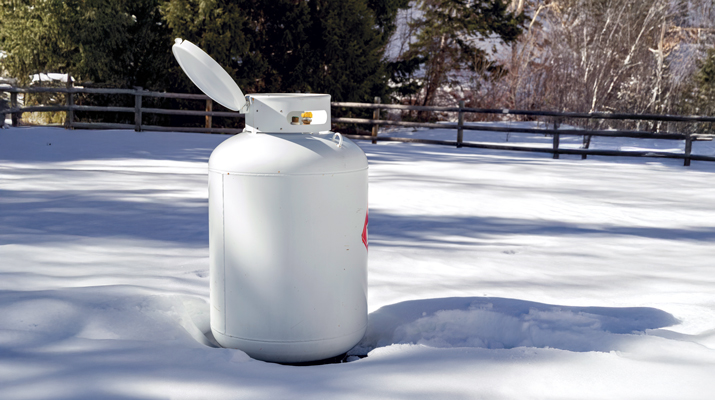Growing the agricultural market in 2025

Growing up immersed in agriculture, I gained first-hand experience using propane to dry grain, heat farm buildings and homes. Some may recognize me from the decade I spent with the Propane Education & Research Council (PERC), where I was honored to lead the industry’s agricultural efforts.
At PERC, I obtained a deep understanding of propane’s many benefits and had considerable practice relaying these to farmers, media and industry partners. I’ve spent recent years, equally joyful, with the U.S. soybean industry and more recently in retail propane and equipment sales leadership with Blue Star Gas on the West Coast.

I’m excited to draw upon my experience to develop a series of articles for LP Gas on topics at the intersection of propane and agriculture. I hope the information provided throughout the year is helpful to propane marketers who wish to grow and improve this segment of their businesses. This month, we’re kicking off with a little perspective on the coming year, and look for more articles in the May, July and September issues.
Farm types
As a bit of background, in 2023 the U.S. Department of Agriculture (USDA) tallied 1.9 million farms in the United States that produced $493.4 billion in gross cash farm income.
As you may expect, the 80/20 rule more than applies, as most are small operations. In fact, the top 364,654 farms (19.3 percent) accounted for 90.6 percent of gross cash farm income in 2023. As you market to agriculture, bear in mind this significant diversity in size and type of operation. In a coming issue, I’ll focus on marketing tips for this sector.
Given the breadth of agricultural products produced, we need safe and healthy farms of all sizes to meet growing consumer demands worldwide, and I believe the propane industry has something to offer all growers. On a macro level, global demand is key to our success, since a significant percentage of many agriculture products are exported.
With the new year underway, the agricultural industry is feeling the pressure of low sales prices and high input costs. We know propane can heat buildings and dry or cure crops. It can also power equipment such as forklifts, irrigation engines and generators. Other uses prove that propane heat, steam or flame can be effective at controlling weeds and pests, thus reducing pesticide use. Offering new applications that can improve efficiency, solve problems and lower operating costs, combined with outstanding service, are keys to success.
Corn growers’ perspective
I had the opportunity to visit with Neil Caskey, CEO of the National Corn Growers Association, to get his thoughts on what 2025 may have in store for the agricultural industry. Corn is the No. 1 planted crop in the United States, at over 90 million acres annually, with grain output ballooning to 15 billion bushels per year.

“Corn producers are optimistic about the coming year but recognize current challenges,” he says.
They are entering a year with price expectations that are less than ideal, and input costs are high. Farmers are hopeful that through legislation and favorable policies, farm prices may improve.
“One priority is to obtain approval for nationwide, year-round E15/gasoline blends, which will increase demand for corn, while the U.S. increases domestic renewable fuel production,” he says. (E15 is a blend of 15 percent ethanol with gasoline; a 10 percent blend is common today.)
With up to 20 percent of corn exported, maintaining and expanding export markets is also critical. Farmers are cautiously optimistic that increased ethanol production and exports will drive demand and improve farm prices. This would be good news for propane, since the nation’s corn crop relies on propane for drying to ensure stability during storage. Propane is especially needed during damp, cool harvest conditions.
Like the propane industry, corn growers also support an OEM supply of modern, spark-ignited internal combustion engines to utilize renewable fuels like ethanol or propane.
Despite economic challenges, Caskey believes the 2025 corn crop will be quite large, on par with the past three-year average.
“Keep an eye on corn planting in your area to get a sense of volume and timing,” he says. “Later planting is more likely to need additional propane for drying.”
He believes engaging with growers to offer sound advice related to fuel purchasing is always appreciated.
“Efficiency and value are always important, and that’s especially true this year,” he adds. “Offering sound options that allow farmers to get the most for their energy expenditures and manage risks will help them ensure they have ample fuel for drying – and is good for everyone.”
Summer applications
Another way to support agriculture and grow your business is to expand summer applications for propane.
Scott Pearson, vice president for propane at CHS Inc., suggests that propane retailers look for ways to diversify non-home heat uses on the farm, such as irrigation engines or propane-powered vehicles, to help build summer gallons and allocations.
As it relates to corn, the nation’s most planted crop, he adds, “Grain drying can be substantial when it’s needed. Continue to monitor crop progress and prepare transports and drivers accordingly.”
Realizing these are challenging times, don’t forget to offer to help improve efficiency of propane applications on the farm. One way is through service and maintenance programs. Also, keep in mind the propane industry will support certain equipment upgrades. Check out the Propane Farm Research Program from PERC. The program will pay up to $10,000 to a farmer for eligible propane equipment, including irrigation engines, generators and water heaters. Information can be found at propane.com/PFRP.
















